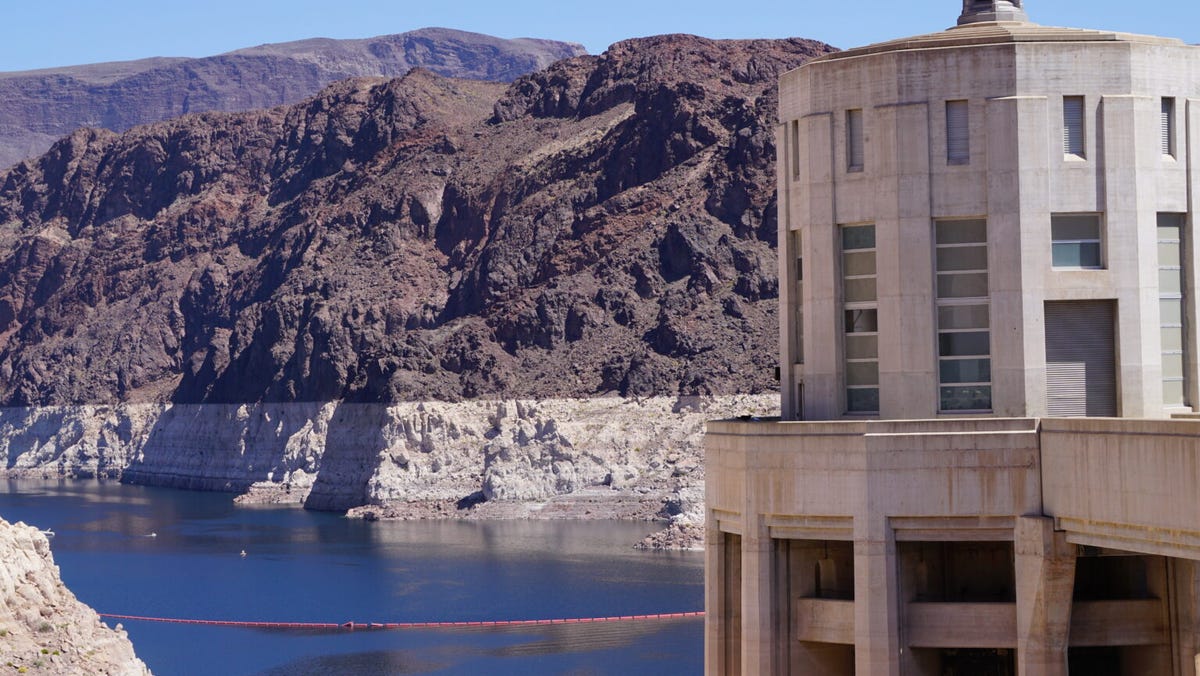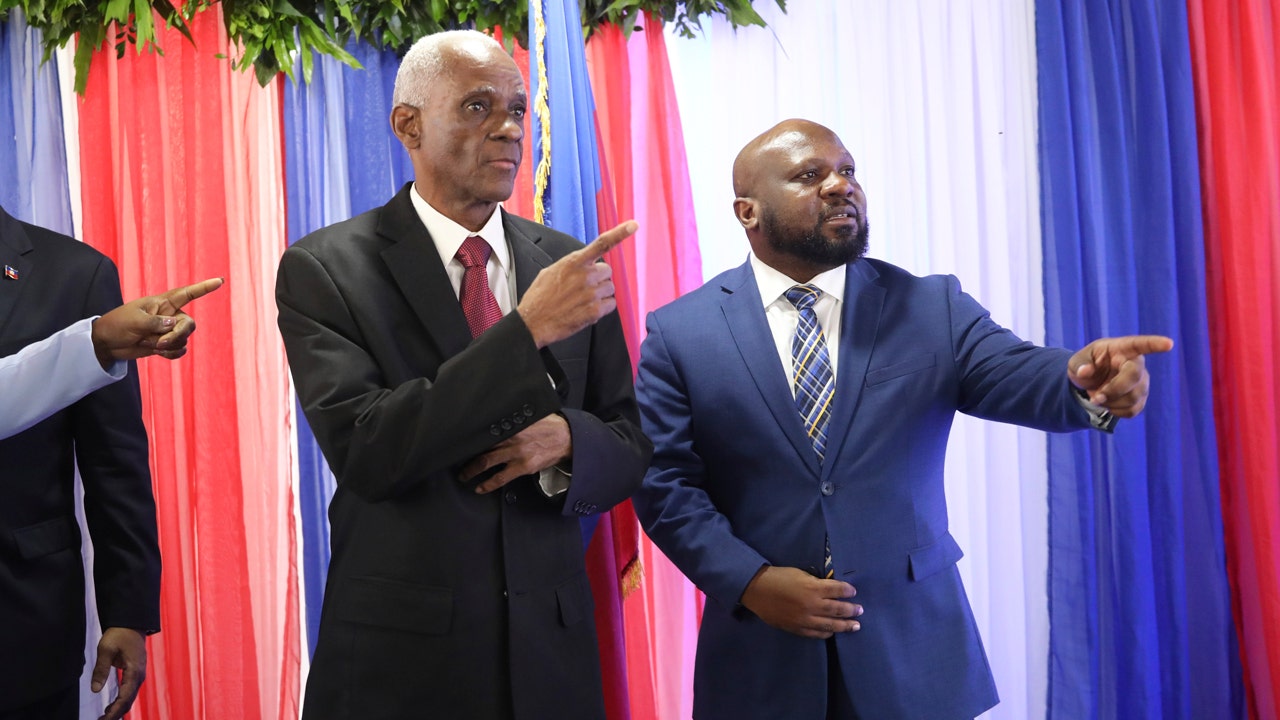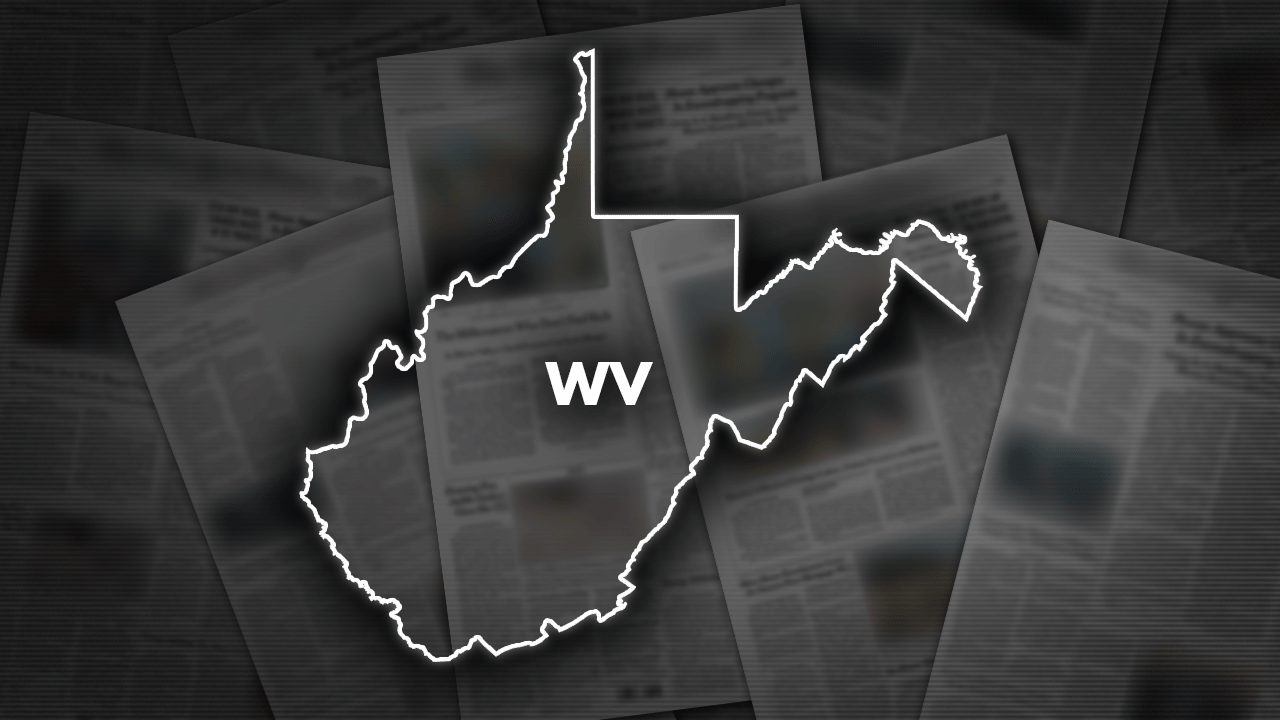South Dakota
BLM to finalize rule allowing federal leases targeted at protection of natural areas • South Dakota Searchlight

The Bureau of Land Management will publish a final rule soon allowing the nation’s public lands to be leased for environmental protection, a Thursday news release from the Interior Department said.
The rule, which both proponents and detractors say marks a shift in the agency’s focus toward conservation, directs land managers at the agency to identify landscapes in need of restoration and to create plans to fill those needs.
It also creates two new types of leases focused on protecting natural areas. The BLM already leases parcels of land for extractive industries including energy development, mining and livestock grazing.
Western lands fight erupts over Bureau of Land Management’s conservation proposal
The rule is likely to set off a conflict in Congress, where Republicans immediately on Thursday renewed their criticism of President Joe Biden’s conservation policies.
In a deviation from the March 2023 draft rule that proposed a new category of conservation leases, the final rule will allow two new types of leases: restoration and mitigation.
Restoration leases will be “a tool for investment in the health of our public lands” an agency fact sheet reads. Lessees would be empowered to work to restore lands, including those impacted by other uses.
Similarly, mitigation leases would be a tool to offset the impacts of other BLM land uses. The agency said an example could be a solar power company that has a facility on BLM land may receive a mitigation lease to restore nearby habitat to mitigate the impact of its development.
The rule is in line with BLM’s multiple-use mandate that requires balancing energy development, mining, recreation and other uses on the nation’s public lands, the agency said.
“As stewards of America’s public lands, the Interior Department takes seriously our role in helping bolster landscape resilience in the face of worsening climate impacts,” Interior Secretary Deb Haaland said in a statement.
“Today’s final rule helps restore balance to our public lands as we continue using the best-available science to restore habitats, guide strategic and responsible development, and sustain our public lands for generations to come.”
BLM released a 178-page preliminary version of the rule Thursday, saying a substantially similar version would be published as a final rule “in the coming days.”
Congressional fight ahead
The rule has met with polarized reaction since the draft proposal was released in March 2023.
Reaction to the final rule from across the political spectrum began arriving within minutes of the announcement Thursday.
At congressional hearing, Noem calls conservation leases ‘dangerous’
Conservation groups and environmental advocates cheered the rule for prioritizing conservation, while Republicans worried it would restrict other types of uses on public lands.
The Mountain Pact, a coalition of local leaders from Western states, released a statement praising the rule.
“The BLM’s Public Lands Rule highlights the need for the agency to work with local communities to focus on the conservation of land, water, and wildlife to ensure communities can protect future access to federal public lands while combating the growing impacts of climate change,” Patrice Horstman, the chair of the Coconino County, Arizona, Board of Supervisors, said in the statement.
David Willms, associate vice president for public lands at the National Wildlife Federation, said in a written statement the rule gives BLM “new tools to restore and conserve degraded lands, while supporting robust local economies. The rule will help the agency identify intact landscapes that wildlife depend on for survival, which will ensure that they thrive for decades to come.”
Democrats in Congress also applauded the measure.
Colorado’s Diana DeGette, the ranking member on the House Energy and Commerce Subcommittee on Energy and Climate, called the move “a significant accomplishment for land conservation and wildlife protection.”
“I am proud that BLM and the Biden Administration are continuing to lead in defending our natural world,” she said in a statement.
Pledge to repeal
But Republicans pledged to undo it.
Wyoming Sen. John Barrasso, the top Republican on the Senate Energy and Natural Resources Committee, promised he and North Dakota’s senior Republican senator would challenge the rule with a resolution under the Congressional Review Act. The law allows lawmakers to try to repeal executive branch rulemaking.
“The people of Wyoming depend on access to public lands for their livelihoods — including energy and mineral production, grazing, and recreation,” Barrasso said in a statement “With this rule, President Biden is allowing federal bureaucrats to destroy our way of life. Senator John Hoeven and I will introduce a Congressional Review Act resolution to repeal this outrageous rule.”
The closely divided U.S. Senate has approved Congressional Review Act resolutions on environmental and agricultural issues in which rural-state Democrats or those in tough reelection races, such as centrist West Virginian Joe Manchin III, Ohio’s Sherrod Brown or Jon Tester of Montana, align with Republicans.
Republicans on the U.S. House Natural Resources Committee approved a bill, sponsored by Utah Republican John Curtis, last year to block the rule from taking effect. The legislation has not received a vote from the full House.
“This rule from the Biden Administration undermines the very people who rely on our federal lands for ranching, grazing, recreation, and beyond,” Curtis said in a Thursday release.
House Natural Resources Chairman Bruce Westerman of Arkansas said Thursday he would do “everything in (his) power” to get Curtis’ bill through the House.
GET THE MORNING HEADLINES DELIVERED TO YOUR INBOX

South Dakota
An abortion rights initiative in South Dakota receives enough signatures to make the ballot

Supporters of a South Dakota abortion rights initiative submitted far more signatures than required Wednesday to make the ballot this fall. But its outcome is unclear in the conservative state, where Republican lawmakers strongly oppose the measure and a major abortion rights advocate doesn’t support it.
The effort echoes similar actions in seven other states where voters have approved abortion rights measures, including four — California, Michigan, Ohio and Vermont — that put abortion rights in their constitution. Abortion rights measures also might appear on several other state ballots this year.
The signatures were submitted on the same day the Arizona Legislature approved a repeal of a long-dormant ban on nearly all abortions, and as a ban on most abortions after six weeks of pregnancy, before many women even know they are pregnant, went into effect in Florida.
Dakotans for Health co-founder Rick Weiland said backers of the ballot initiative gathered more than 55,000 signatures to submit to Secretary of State Monae Johnson, easily exceeding the 35,017 valid signatures needed to make the November general election. Johnson’s office has until Aug. 13 to validate the constitutional initiative. A group opposing the measure said it’s already planning a legal challenge to the petition alleging the signatures weren’t gathered correctly.
South Dakota outlaws all abortions, except to save the life of the mother, under a trigger law that took effect after the U.S. Supreme Court overturned Roe v. Wade in June 2022.
“The abortion law in South Dakota right now is the most restrictive law in the land. It’s practically identical to the 1864 abortion ban in Arizona,” said Weiland, referring to the law Arizona legislators voted to repeal Wednesday. “Women that get raped, victims of incest, women carrying nonviable or problem pregnancies have zero options.”
Weiland said the ballot measure is based on Roe v. Wade, which had established a nationwide right to abortion. It would bar the state from regulating “a pregnant woman’s abortion decision and its effectuation” in the first trimester, but allow second-trimester regulations “only in ways that are reasonably related to the physical health of the pregnant woman,” such as licensing requirements for providers and facility requirements for safety and hygiene.
The initiative would allow the state to regulate or prohibit abortion in the third trimester, “except when abortion is necessary, in the medical judgment of the woman’s physician, to preserve the life or health of the pregnant woman.”
“Our Roe framework allows for abortion in the first two trimesters,” Weiland said.
The American Civil Liberties Union of South Dakota doesn’t support the measure.
“In particular, it does not have the strongest legal standard by which a court must evaluate restrictions on abortion, and thereby runs the risk of establishing a right to abortion in name only which could impede future efforts to ensure every South Dakotan has meaningful access to abortion without medically unnecessary restrictions,” executive director Libby Skarin said in a written statement.
Planned Parenthood North Central States, the former sole abortion provider in South Dakota, hasn’t said whether the organization would support the measure. In a joint statement with the ACLU of South Dakota, the two said groups said, “We are heartened by the enthusiasm South Dakotans have shown for securing abortion rights in our state.”
Weiland said he’s hopeful once the measure is on the ballot, “another conversation will occur with some of these organizations.” He cited his group’s hard work to get the measure this far, and said measure backers are “optimistic that we’re going to have the resources we need to be able to get the message out.”
Republican opponents, meanwhile, are promising to fight the initiative. Earlier this year, the GOP-led Legislature passed a resolution formally opposing it, along with a bill for a petition signature withdrawal process. The backer of the latter bill was Republican state Rep. Jon Hansen, a co-chair of Life Defense Fund, the group promising to challenge the ballot initiative.
Hansen called the measure extreme during a forum last month.
“If the proponents of this abortion amendment wanted to just legalize rape and incest exceptions, they could have done that, but they didn’t do that,” Hansen said at the time. “Instead, what they wrote is an amendment that legalizes abortion past the point of viability, past the point where the baby could just be born outside the womb and up until the point of birth.”
Hansen also asserted that the measure would not allow “basic health and safety standards for mothers” in the first trimester.
Weiland has repeatedly disputed Hansen’s claims, and called Life Defense Fund’s planned court challenge “just a desperate charge on their part.”
South Dakota
Mitt Romney insists he’s no dog killer, unlike South Dakota Gov. Kristi Noem

Mitt Romney says he resents being compared to South Dakota Gov. Kristi Noem after she bragged about killing a pet dog over its troublesome behavior.
The former Republican presidential standard-bearer insisted that he did nothing nearly so cruel as Noem by strapping a pet dog to the roof of his car, a much-mocked episode from his 2012 White House campaign.
“I didn’t shoot my dog,” Romney told HuffPost Tuesday. “I loved my dog, and my dog loved me.”
He called Noem’s story about shooting and killing the pooch “a tale of slaughter.”
Noem, a right-wing Republican hardliner who was once thought to be on former President Trump’s vice presidential short list, drew withering criticism from across the political spectrum with her bizarre account in a memoir that emerged last week.
Apparently hoping to burnish her tough lady image, Noem recounted a 20-year old episode in which she says she killed the dog named Cricket because it didn’t hunt properly and displayed other problematic behavior.
““I hated that dog,” wrote Noem, adding it was “less than worthless.” She also killed a goat that she derided as smelly and obnoxious.
Romney own doggie debacle came in 1983 when as a young father he packed up the family Chevrolet station wagon for a summer trip from Boston to the Canadian Atlantic seaboard.
With no room inside for the pet pointer, Seamus, Romney attached a dog carrier to the roof rack and created a makeshift shield to protect him from the elements.
The story was recounted by Romney’s son during his GOP presidential primary campaign as a way of humanizing the candidate who battles perceptions that he is wealthy and aloof.
But it backfired as political rivals pounced on the damaging claim that Romney strapped the pooch to the car’s roof.
South Dakota
How SDSU put South Dakota at forefront of precision ag revolution

BROOKINGS, S.D. — South Dakota State University’s new precision agriculture program has had success at persuading in-state and some other Midwestern farmers to use more technology in their operations, while other states lag in their adoption of it.
SDSU was the first university in the country to create a
program that teaches and helps farmers use precision ag
, the science of new technologies and traditional methods that make operations more efficient to increase crop yields while reducing environmental impacts. For example, the use of global positioning satellites helps target chemicals and fertilizers where they’re needed most.
Ali Mirzakhani Nafchi, an assistant professor at the precision ag center, said the school is working to increase usage through education and research to make the technology more practical for farmers.
“I am very, very optimistic it is going to work. And we will see the changes not only in South Dakota, in the nation and in the world,” he said.
South Dakota has one of the highest percentages of usage, with 53% of farmers using precision ag technology,
according to a study from the U.S. Department of Agriculture.
Other Midwest states where more than half the farmers also use precision ag include North Dakota, Iowa, Illinois and Nebraska,
according to a study done by the SDSU Ness School of Management and Economics
.
Nationally, just 27% of farmers use precision ag practices to manage crops or livestock, the Ness study found.
Precision ag benefits, challenges to adoption
The most widely adopted precision ag technologies include auto-steering in machinery and guidance or “georeferencing technology,” the process of taking digital images.
Satellite imagery is the next most widely adopted technology, with nearly 60% of farmers having used it, according to the Ness study.
The technology typically increases crop production by 4% and fertilizer placement efficiency by 7%, according to a study done by the
Association of Equipment Manufacturers
. Precision ag also reduces herbicide and pesticide, fossil fuel and water use.
Despite the benefits of optimizing returns and yields, factors such as cost and lack of general knowledge about precision ag have prevented most farmers from using the tech products as widely as originally hoped.
Bart Pfankuch / South Dakota News Watch
Anna Karels, a student at the precision ag center, said it takes money to get started but will save money in the long term.
“I think it’s hard for a lot of farmers to (understand) that, yes, it (might increase) my costs … upfront, but it pays off over a certain number of years,” she said.
Nafchi said lowering the initial rate will incentivize more farmers to use the technology.
“Initial costs for variable rate application is too high,” he said. “So imagine if we get help. Somehow maybe make it less inexpensive, or lower the initial costs, or just go and do an incentive, investment for them, and ask them to just try it. And then they see the return on their investment is really good. I’m very optimistic they will use it.”
If the initial costs are unattainable for some farmers, there are programs in place to help operations use this technology. USDA and the National Science Foundation have provided almost $200 million for precision ag research and developmental funding from 2017 to 2021,
according to the U.S. Government Accountability Office
.
Another factor for the low adoption rates is the lack of knowledge about the new technology. But there are options for South Dakota farmers to learn more.
“Dealerships like John Deere, I know they have a lot of clinics that they put on and stuff like that. (The school) does a lot of that to where they go out and show farmers, ‘OK, this is what this does and how it can help you and benefit you’ and kind of like go through and show them how to use it,” Karels said.
The Raven Precision Agriculture Center
The
Raven Precision Agriculture Center
was built for students in the major to learn about precision ag in interactive ways.
The building features rooms full of equipment and precision ag products students use to learn through hands-on technology. The $46.2 million building opened in August 2021, making it the first precision ag program in the nation.
Kasiviswanathan Muthukumarappan
, endowed department head and professor at the center, said the department is proud of being the first but is now changing its curriculum to become the best program in the nation.
“We would like to grow our precision ag program to the next level, and elevate the experiences for our students,” he said.
One change is to add more specialized majors to collect more data on precision ag.
“Previously, we had one recipe for all the students who are enrolled in (the) precision ag program, meaning that we combine agronomy and technologies together and make it one robust program,” Muthukumarappan said. “Now, we are making it more user-friendly. And we have three different tracks. One is for technology track. The other one is for agronomy track. And the other one is for data track, electronic strikers.”
The program, with 66 students currently, is trying to raise enrollment rates by 20% in the next five years to make this goal attainable. SDSU’s mission is to simplify this technology and make it more practical for farmers, Nafchi said.
This story was produced by South Dakota News Watch, an independent, nonprofit news organization. Contact Greta Goede at greta.goede@sdnewswatch.org.
-

 Education1 week ago
Education1 week agoVideo: Dozens of Yale Students Arrested as Campus Protests Spread
-

 News1 week ago
News1 week agoLarry Webb’s deathbed confession solves 2000 cold case murder of Susan and Natasha Carter, 10, whose remains were found hours after he died
-

 World7 days ago
World7 days agoHaiti Prime Minister Ariel Henry resigns, transitional council takes power
-

 Politics1 week ago
Politics1 week agoFetterman hammers 'a–hole' anti-Israel protesters, slams own party for response to Iranian attack: 'Crazy'
-

 World1 week ago
World1 week agoPeriod poverty still a problem within the EU despite tax breaks
-

 World1 week ago
World1 week agoUS secretly sent long-range ATACMS weapons to Ukraine
-

 News7 days ago
News7 days agoFirst cargo ship passes through new channel since Baltimore bridge collapse
-

 World1 week ago
World1 week agoTurkey’s Erdogan meets Iraq PM for talks on water, security and trade








/cdn.vox-cdn.com/uploads/chorus_asset/file/25429884/2024260145.jpg)









